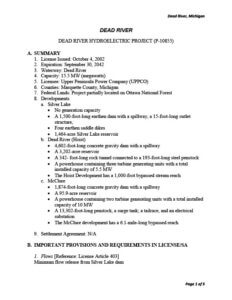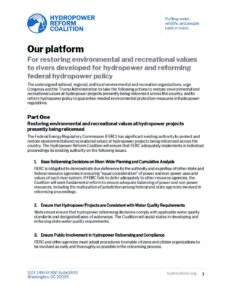CalTrout and Partners Support Governor Newsom’s California Salmon Strategy

Coho salmon by Charlie Schneider
FOR IMMEDIATE RELEASE
February 1, 2024
Contact:
- Charlie Schneider – cschneider@caltrout.org – 707.217.0409
- Matt Clifford – matt.clifford@tu.org – 406.370.9431
- Monty Schmitt- monty.schmitt@tnc.org – 510-325-3594
The California Salmon and Steelhead Coalition, consisting of CalTrout and our partners Trout Unlimited and the Nature Conservancy, supports Governor Newsom’s Salmon Strategy for a Hotter and Drier Future.
The Salmon Strategy affirms that actions and policies long supported by Tribes and fishing and conservation groups are key to recovery of native salmon and steelhead and their fisheries, and that strategic, sustained collaboration will be needed to implement these actions and policies.
Sacramento, CA – The California Salmon and Steelhead Coalition today expressed support for Governor Gavin Newsom’s California Salmon Strategy, released January 30th. The Coalition, a partnership between California Trout, The Nature Conservancy, and Trout Unlimited, noted that many elements of this plan have been vetted for years by Coalition members and project partners and have proven effective in enhancing salmon habitat and recovery.
The California Salmon and Steelhead Coalition works to increase streamflow in North and Central Coast watersheds to benefit salmon and steelhead while improving water supply reliability for communities.
Salmon and steelhead are a keystone species in many of California’s coastal ecosystems and an important indicator of watershed health. Yet up and down the state many salmon and steelhead populations are crashing or in long-term decline. Over the past five years, abysmally poor salmon returns have twice caused the closure of commercial and sport salmon fisheries and severely limited tribal harvest in California. There is no time to lose in implementing the policy changes, restoration, and barrier removal actions described in the Strategy.
“Restoring salmon runs amidst changing climate is not just an environmental imperative, but a societal necessity,” said Liz Forsburg Pardi with The Nature Conservancy. “We applaud Governor Newsom’s leadership and California’s Salmon Strategy for a Hotter, Drier Future. Guided by science like the California Environmental Flows Framework, which tells us how much water healthy rivers and fish need to thrive, and by collaborating with tribes, agencies, and conservation partners, we can build a legacy of protecting our ecosystems, cultures, and water resources for the future.”
The California Salmon Strategy for a Hotter, Drier Future sets forth six categories of actions California will take over the next several years to help recover native salmon and steelhead. Priority actions include removing obsolete dams, restoring riparian habitat, and increasing flows to provide more water when fish need it most. The Strategy includes actions the Coalition has been developing and field testing over the past decade, among them projects that help farms and landowners switch the timing of water use from summer to winter, keeping water instream when salmon need it most and improving water security for people during drought years.
The Strategy also supports science and policy actions for which the Coalition has long advocated. The Coalition has been advancing legislation (AB1272) that would achieve the Governor’s goal of creating minimum instream flow standards for coastal watersheds and developing management plans to help communities meet those standards in drought years. The Coalition also has been a key player in understanding and establishing the science needed to ensure salmonids have enough water at the right time and of sufficient quality, through development of the California Environmental Flows Framework. The Coalition supports this work through operation of dozens of streamflow gauges on small, but critically important coastal tributaries and rivers and development of modeling tools to assist with management decisions.
“The Governor’s strategy brings in many of the elements we think are effective to bring back salmon populations,” said Curtis Knight, Executive Director for California Trout. “Restoring habitat, removing fish passage barriers, and investing in technology and science are crucial to ensure these fish are around for future generations. We don’t have a moment to waste, and this approach, built on partnerships with tribes and many others, indicates the right level of urgency to address the crisis these native fish are facing.”
The Strategy also expresses support for removing the two obsolete dams of PG&E’s defunct Potter Valley Project on the Eel River. A key to this project’s success is working with Russian River water interests to make sure that new infrastructure developed to enable continued limited water diversions from the Eel to the Russian River will not harm fish. The Coalition partners have played a central role in developing a plan for decommissioning these dams, which will re-establish anadromous fish access to hundreds of miles of prime headwater spawning and rearing habitat from which they have been blocked for more than a century.
“Governor Newsom’s salmon strategy affirms the crucial importance of the dam removal and river restoration work TU has been doing in California for the past two decades, and the importance, and urgency, of expanding this work,” said Brian Johnson, California Director for Trout Unlimited. “We applaud the Governor for his leadership on Klamath dam removal and for calling out the need to remove the dams on the Eel River. We look forward to working even more closely with the Governor, state and federal resource agencies, and our Tribal Nation partners to reconnect and restore habitat and river flows and to ensure healthy salmon and steelhead populations in the face of climate change.”
VIEW THE NEWSOM ADMINISTRATION’S SALMON STRATEGY
The post CalTrout and Partners Support Governor Newsom’s California Salmon Strategy appeared first on California Trout.


